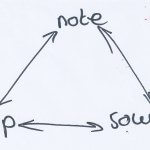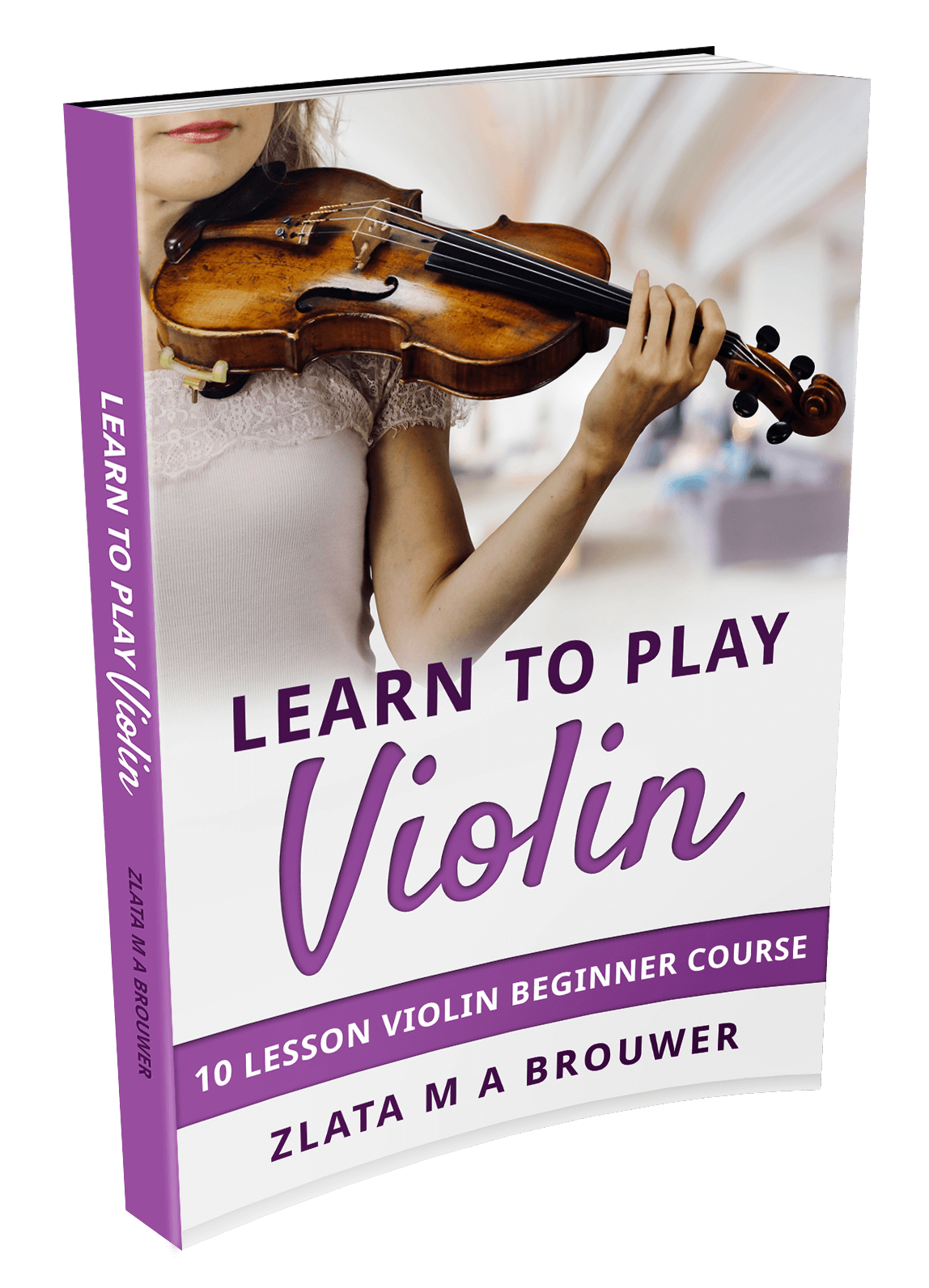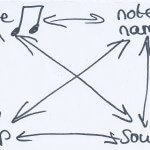How to Read in a Different Clef with Ease
Peter plays violin and viola and writes (freely translated from Dutch)…
Is there are trick or a donkey’s bridge (we call mnemonics ‘donkey’s bridges’ in Dutch) to read in different clefs or is it just a matter of practicing?
I hope you have a handy tip for me.
Thank you and best regards,
Peter
When you play violin and viola or cello or another instrument, you have to read in different clefs. For example I play violin, viola and piano, so I have to be able to read in three different clefs. This can be quite confusing from time to time. The notes you are used to find in a certain place are now in a different place of the bar.
I will share with you my experience with one of my students, who played violin on an advance level and wanted to pick up the viola on the side. I did some exercises with her to get used to reading in a different clef.
Also I will share the system that is behind these exercises. You can copy my exercises, but as you will know the system you can also create your own exercises based on your needs.
Exercise 1
First I made my student buy a simple beginner book, which was Sassmanshaus – Early start on the viola book 1 (click here to see exactly the book I mean and buy it). As an advanced violin player, this was far below her level. I told her she would go through it really fast, but the advantage would be that she would build up reading in the viola clef from open strings and up.
Exercise 2
After that we did a writing exercise. She had to write down etudes she played on the violin for the viola. She had to transpose it a fifth and write it down in a different clef. This didn’t just save her money on sheet music, but it’s a great exercise to get used to and trained in the new clef.
Exercise 3
Just play the viola! My student played violin in an amateur orchestra. There was a shortage of violists (where is there not?) and we had a chat about this. After some talking we decided that the ultimate practice for her was to make the jump: to play viola in the orchestra for the coming season. Of course it was a big jump and certainly scary.
At this point she was already a little bit used to playing the viola and to read in this clef. Studying the orchestra music took her quite a bit longer than normally when she was playing the violin, but the rehearsals and the concert went really well.
 These were the steps we took. They are based on a system I will share with you here.
These were the steps we took. They are based on a system I will share with you here.
When you are playing and reading notes, you need to make a couple of connections between your hands and head. Click on the picture on the left to make it larger and see the connections between note, grip and sound.
The note is in the sheet music. The sound is what you hear. The grip is what you do on your instrument.
These three are all connected:
- We need to know which grip belongs to which note… we need to know where we can find the note on the fingerboard
- The other way around is that we need to know if we make a grip how this will look like in the sheet music
- When we see a note we must be able to imagine how it sounds. Otherwise you can’t check your intonation
- When we do a grip or use a finger we also must be able to know how this will sound
- When you want to hear a certain tone, you need to know which grip you need to make. This is handy when you know a song or tune that you want to play
- When you want to write down your favorite song, hearing the tone and knowing how to put it into sheet music can also come in handy
Join my FREE beginner violin course
I take you from scratch step by step to your first violin concerto including 40 videos, sheet music and violin tabs.

Hi! I'm Zlata
Classical violinist helping you overcome technical struggles and play with feeling by improving your bow technique.
There are several possible exercises to make these connections stronger. For example you can train yourself to imagine the sound of the note before you play it. Playing it is a check. When you hear a tone, try to find which grip corresponds to it and try to write it down in sheet music.
The six connections described above can all be trained separately with different exercises. Always train and focus on one connection at the same time.
Your assignment 1
When you read in different clefs the note you see can have a different name, sound and grip depending on the clef. I have added the note name to the system in the picture on the left. Click on the picture to make it larger.
Now there are a lot more possible connections to be made and trained. Can you identify all of them? There are 12 connections in total.
Your assignment 2
From the connections we have identified, test on what connection are well established for you and what connections might need some training. Write down two or three connection that need most training.
Your assignment 3
For the connections that need some training (see assignment 2), create three exercises for yourself to train this. Please share them in the comments below.
I hope this video hasn’t confused you, but can help you identify gaps in your ‘connections’ and enables you to train yourself.
The result will be that you can read in different clefs for different instruments with ease.
Is this video helpful to you? Please let me know in the comments below!
Love,
Zlata
PS: Do you have questions or struggles on violin or viola playing? Post a comment below or send an e-mail to info@violinlounge.com and I might dedicate a Violin Lounge TV episode to answering your question!



Hello Zlata,
I had the exact situation, going from Violin to Viola about a year ago. I did exactly what you suggested with the easy book, then harder music, then beginner orchestra, more advanced orchestra and then an Pit orchestra for a musical. I found that the things I had most trouble doing were relationships between strings (which I was able to do quite well on violin) and simply naming notes if I looked at the staff. I was able to play the notes but if the conductor asked what I was playing I had to think of where the note was on the instrument so I could say what the note was. It has improved greatly in the past year but it was a connection my brain had to make that took some time. Thanks for sharing your thoughts.
Thanks for sharing!